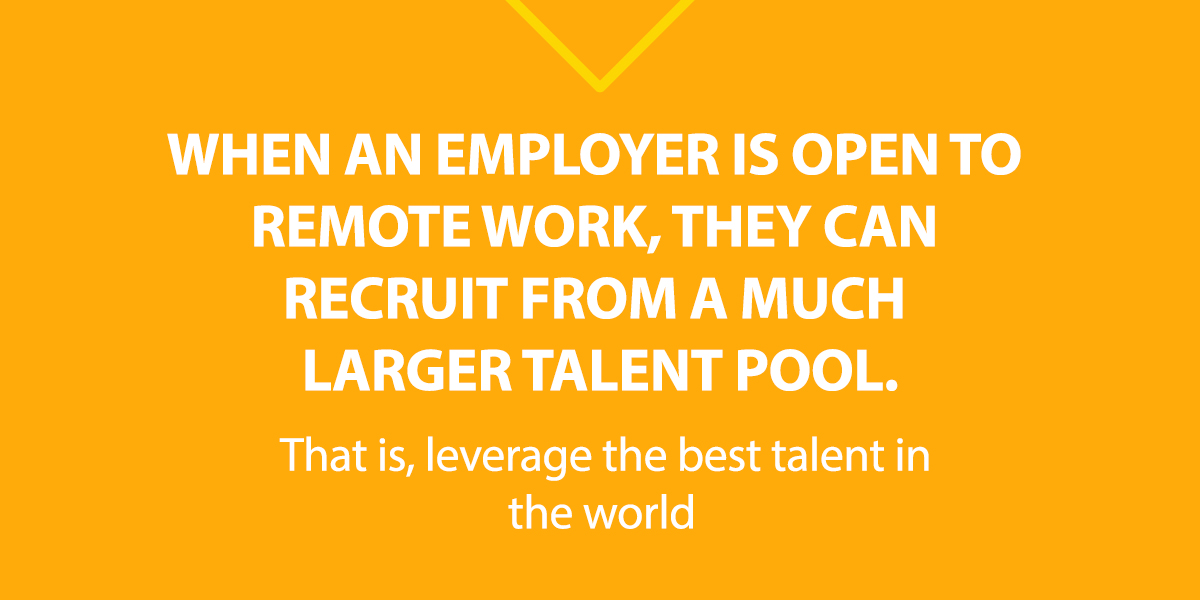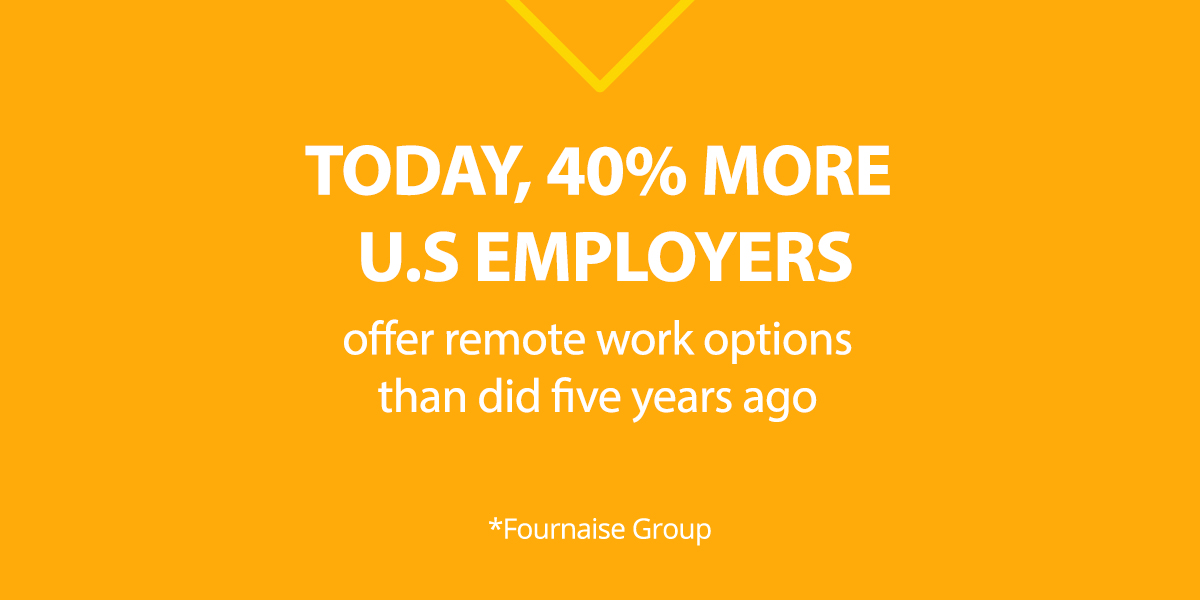The coronavirus threat has companies telling employees to work from home.
How is it going? If the existing, fast-growing remote workforce is any indication, many companies will never look back.
A two-year study by Stanford University found that remote talent are 13.5% more productive than their office-based counterparts, 9% more engaged, and twice as likely to stay with the company rather than quit. As reported in the Vitamin T 2020 Salary Guide, a Gallup poll found when people work 60% to 80% of the time remotely, they hit the “engagement sweet spot.”
With time-sucking commutes and office distractions gone, telecommuters work 1.4 more days every month, or 16.8 more days every year than those who go to an office. (In fact, they sometimes have trouble unplugging from work.) Remote talent regularly meets and exceeds objectives, which makes sense: the freedom is something they value, so it makes sense they'd perform well in exchange for the arrangement.
It's Been a Trend for Awhile and it's Here to Stay
As of 2018, Millennials made up about 35% of the workforce. As soon as they settled in, (followed by Gen Z), they pushed for more flexible working policies.
Millennials want to be happy in their work with a good work-life balance. Digital natives, they know they can work anywhere with collaboration tools like Slack, Skype, Zoom, Join.Me, Dropbox, Google Drive, Asana, or Basecamp. Remote can feel close.
They also know that, with this kind of arrangement, productivity does go up. It's a win-win and, they know, a fair exchange.
Today, more U.S. employers—40% more—offer remote work options than did five years ago. And in the past five years, for high-growth roles like CX, UX, content marketing, and social media, the number of our very own talent working remotely has skyrocketed from 12% to nearly 40%.

One reason the trend is here to stay: once employers adjust, they reap the rewards. Remote work can send overhead and fixed costs down. According to Global Workplace Analytics, businesses would save $11,000 for every half-time telecommuter, while total national savings would be over $700 billion a year. Did you get that? Only half-time workers.
The second reason it's here to stay is just as important. When an employer is open to remote work, they can recruit from a much larger talent pool. That is, leverage the best talent in the world, quite literally, not just great people in their physical geographic location.
This New Test Wasn't Anyone's Big Idea, but It's Underway
COVID-19, the coronavirus disease, has already added to the remote worker ranks and, before it's over, it's likely to add much, much more.

But the truth is, remote work isn't for everyone. Not every person has the discipline for a not-in-the-office job. While productivity numbers are through the roof, we're about to learn if they hold up for people who didn't choose this way of working but had it chosen for them.
For that reason, we thought we'd pass along a few lessons we've learned over the last many years if your company needs to (or wants to!) implement a remote worker policy:
- Set expectations, and help those who need it to impose structure on their days. That means getting/giving feedback.
- We like morning check-ins with teams: “What are you working on today? Are there any barriers to doing it the team should know about and help with?”
- Make sure everyone has the right tools to connect and collaborate.
- Explicit appreciation will go far, especially for those that miss office interaction.
Remote, distributed staff is a good business strategy to pursue and, at the moment, it may be a necessary one too. So learn all you can.
And hey, wash your hands.
This blog was previously published on Vitamin T's website.
Latest.

AI adoption failing isn’t the tech, it’s the people. How smart businesses overcome this.
Technology, Thought Leadership, Industry Trends

Temp-to-perm is the best way to hire today.
Hiring Insights

How to keep top talent: Strategies for successful onboarding
Hiring Insights, Ask Aquent, Training Resources


